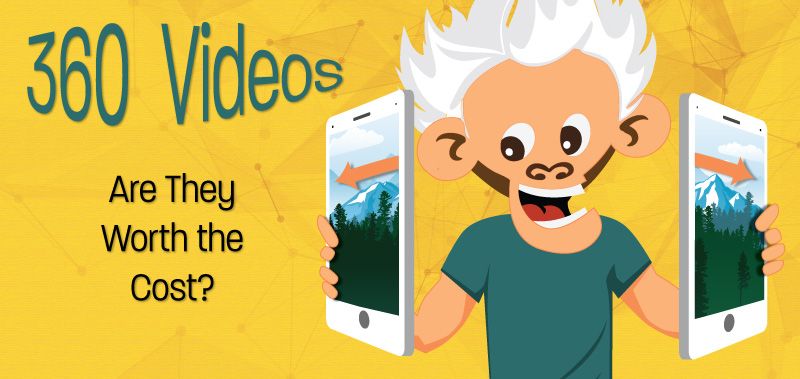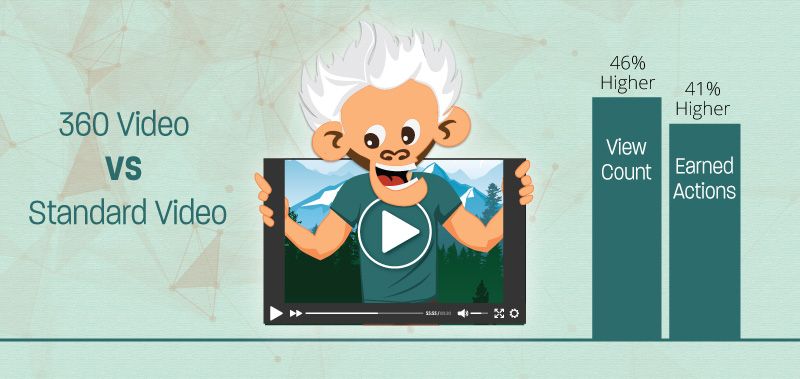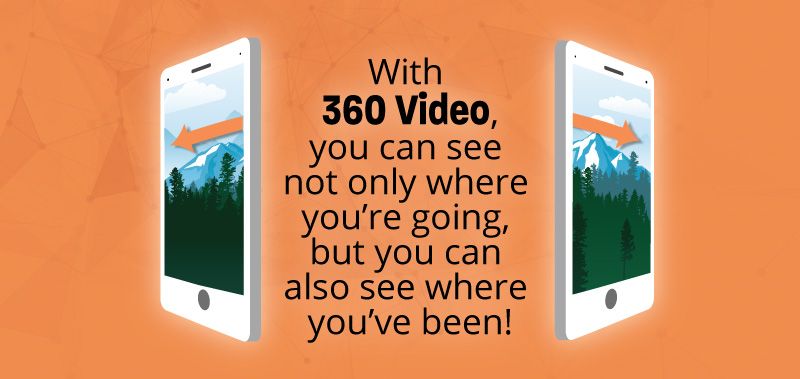
The future has arrived, and it’s called 360 Degree Immersive Video. Viewers can now submerge themselves into the middle of a scenario rather than watch it from the sidelines. This goes for all kinds of productions, including sports, music, tours, exploration and more.
With traditional film and video, the director films what he wants. The editor then determines the right moments and the proper angles that he deems most effective. In other words, you see just what the director and the editor want you to see. However, with the remarkable new technology of 360 video, you can see exactly what YOU want to see. This means that viewers can look at the video from every angle by simply swiping or moving their phone or tablet around-there’s no headset required! You can look up, down, left and right. You can even turn around and look behind you. It’s as though you’re standing in the middle of the scene!
This is all great information and amazing technology, but from the marketer’s standpoint it begs the questions: Is it worth the cost? Do these 360 video ads create more engagement than the traditional ads? Brands have been experimenting to find out.
Video marketing experts created two campaigns, similar in nature, using YouTube’s choice-based ad format. Each of the videos featured a one-minute segment for a large sportswear company. One of them was shot and presented in the spherical 360 video format, and the other was done in the traditional fashion. Both of the vids contained a Call to Action that guided the viewer to an extended version of the same video. This was so that they could determine if the 360 ad was more effective at leading viewers to a full-length video. The typical metrics, such as view-through rate and viewer retention were examined in order to compare viewer engagement across both of the video pieces. In addition, a new engagement metric (called “interaction rate”) was used to measure whether the viewers engaged with the functionality of the 360 video by tilting a mobile phone or dragging the viewfinder on a desktop screen.
It should be noted that throughout the experiment, both of the videos (including the full-length ones) were not listed, so the only way they could be seen is through the testing company’s in-stream ad campaigns or through peer-to-peer sharing.
The test videos featured two Olympic skiers, who came together to train with one another. The traditional video was framed around the two skiers. Aerial and wide-angle shots were used during their run down the mountain, showing not only the athletes, but the scenery around them. Conversely, the 360 version of the video started the audience with simply the terrain, with the idea that the viewers could independently explore the surroundings.
The expectations were that the immersive 360 video would outperform the traditional one in view-through rates across both desktop and mobile devices. However, surprising as it is, the metrics proved otherwise. The 360 in-stream video actually underperformed the traditional ad, which leads one to believe that viewers aren’t always up for interacting with the video they’re watching, especially if the viewer is used to watching mostly standard videos.
While the 360 ad was outperformed by the traditional video ad in view-through, there was a huge degree of redemption for the new technology. The 360 video drove more viewers to click through to see the longer version of the video. This is a good indicator that being embedded directly into the middle of the action creates more of an intrigue, and the viewers want to see more. In addition, the interaction rate (meaning how often viewers tilted and scrolled to get different views) was higher than the view-through rates, indicating that the viewers were driven by the 360 piece to interact, even if they chose not to watch the entire short 30-second ad.
The study indicated that the 360 video had a 46% higher view count than did the standard full-length video, and that it drove 41% more earned actions than did the standard ad. In addition, messaging apps (like WhatsApp and iOS messenger) provided statistics that indicated that viewers of the 360 video were copying and pasting the URL in order to share the piece. This explains why the clicks for the short video and long video pieces didn’t match. Those with whom the videos were shared were never privy to the short version because the videos weren’t listed.

While the 360 video was victorious in all the earned action metrics (to the tune of 41% more), which included views, shares and subscribes, one must keep in mind that this was a video; a story … not an ad. 360 video ads appear to have the potential to drive engagement statistics through the roof, but in reality, until advertisements are tested, we aren’t sure of the effect it will have on brand marketing strategies.
It is promising, that uploads of 360 videos are continuing to grow, virtually doubling over the last 90 days. Brands are starting to forge the way, using these technologies to get creative with ads. BMW used this advanced breakthrough to film an entire car race. A movie trailer for the School of Rock created a 360-degree promotional music video, and AT&T simulated a car crash to drive home the importance of exercising safety while using your mobile phone.
We don’t know the entire story yet, but there’s one thing we know for sure:
With 360 video, you can see not only where you’re going, but you can also see where you’ve been!




